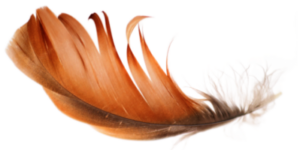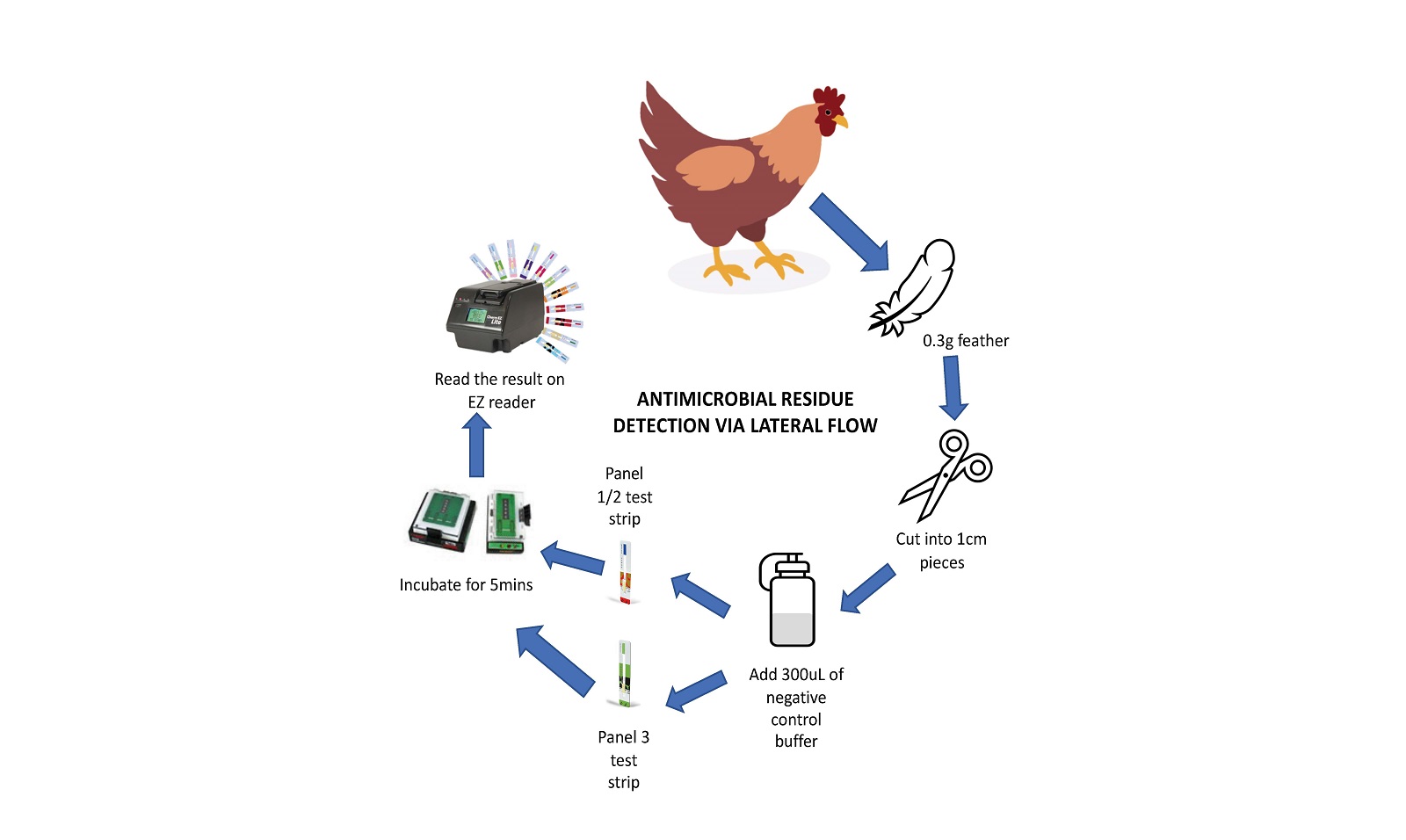
Sophie Hedges
Molecular biologist and epidemiologist
Royal Veterinary College
View this page in:
VietnameseA new use for an established laboratory test is helping to detect drug residues in feathers. It is set to reveal a fuller picture of antibiotic use and misuse in the poultry industry than is currently available – vital information for informing policy and practice aimed at tackling the rise of ‘superbugs’.
The demand for chicken and eggs in Asia and across the rest of the world is high and getting higher. In recent years, poultry has overtaken pork as the world’s most produced meat with a 48% predicted increase in world chicken production forecast between 2017 and 2050, and 71% production growth expected in Asia. To meet demand, chicken production has intensified rapidly with, for example, some production facilities in Southeast Asia having the capacity now to process 100 million birds a year.
However, while intensification may help meet demand, the process has been accompanied by the increased use of antimicrobial drugs, such as antibiotics, in poultry production, particularly in countries in Asia. The drugs are used to treat and prevent disease in birds, a more frequent occurrence with intensification of farming practices. Occasionally, antimicrobials are used as growth promoters in this part of the world too, a practice banned in the European Union.
These practices are contributing to the global health menace that is antimicrobial resistance (AMR). This is when the overuse and misuse of antimicrobial drugs leads to their becoming noneffective as the bacteria against which they are directed develop resistance genes. AMR is resulting in the rise of ‘superbugs’ and untreatable infections in animal and people. The World Health Organization has called AMR one of the top 10 global public health threats facing humanity.
Country specific efforts have sought to reduce the impact of antimicrobial drugs on the occurrence of resistance genes in meat sold to the public. For example, ‘maximal residue limits’ can be put in place, which state the maximum levels of antimicrobials that can be present in chicken meat when it is sold and deemed safe for people to eat. These are typically country or organisation specific and are not universal.
To ensure meat safety, so-called ‘withdrawal periods’ – the minimum period from administering the last dose of an antibiotic to an animal to that animal’s preparation as meat – are also practised. This time can very between antimicrobial and animal species. However, a diverse range of antimicrobials is used in the poultry industry across Asia and guaranteeing the safety of people who eat chicken and chicken products remains a challenge. Asking chicken producers to declare details of their antimicrobials use is one way of trying to ensure meat safety. Residue testing in meat samples, is another.
However, producers for a variety of reasons may not always offer up full information. And meat sample testing is only partially effective as the ‘memory’ of antimicrobials drug administration to live birds is only evident in their meat for a limited time – two to 14 days, depending on the antimicrobial. After this time, existing lab methods cannot detect them – even though the meat may still contain resistance genes.
 Recognising the limitations of current techniques, researchers turned their attention elsewhere: to the birds’ feathers – an often overlooked poultry product. The team in London used previously unpublished methods to adapt a technique now used for the detection of antibiotics in milk on dairy farms – namely, lateral flow analysis. Feather samples were soaked in a buffer solution to extract the antimicrobials. Then, the buffer was run through a series of lateral flow strips, each one detecting four antimicrobial classes or drugs. By doing this, the team was able to identify, down to group level, antimicrobials on the surface of the feathers.
Recognising the limitations of current techniques, researchers turned their attention elsewhere: to the birds’ feathers – an often overlooked poultry product. The team in London used previously unpublished methods to adapt a technique now used for the detection of antibiotics in milk on dairy farms – namely, lateral flow analysis. Feather samples were soaked in a buffer solution to extract the antimicrobials. Then, the buffer was run through a series of lateral flow strips, each one detecting four antimicrobial classes or drugs. By doing this, the team was able to identify, down to group level, antimicrobials on the surface of the feathers.

This innovative approach, combined with meat testing and farmer declarations, is set to enable the telling of a much fuller story of antimicrobial drug use in chicken production. While the meat residues show a ‘snapshot’ in time, residue testing of feathers can provide a historical use of antimicrobials in chicken production.
The technique can be adapted by different lab groups around the world for a small investment in equipment and resources. Ease of access to the machine could lead to the development of ‘in field’ methods and provide further data towards combatting AMR. Farmers, policymakers and other stakeholders can use this information to inform both policy and practice to decrease the impact of AMR development and spread.
The methods are now being validated, with the results to be processed as part of on-going research. Approximately 500 feather samples are being analysed using these lateral flow techniques and the method itself will be validated using liquid chromatography-mass spectrometry (LCMS) results.
Successful validation of the methods could see this technique marketed as a new tool for residue determination. The results will provide further insight into antimicrobials used within the poultry sector and the potential impact on the rise of resistance genes in agriculture and human clinical settings.
The research is part of an ongoing collaboration between the One Health Poultry Hub partners in Nanyang Technological University, Singapore, and Royal Veterinary College, UK.
The data was collected in the field in Vietnam, Bangladesh and India.

Molecular biologist and epidemiologist
Royal Veterinary College